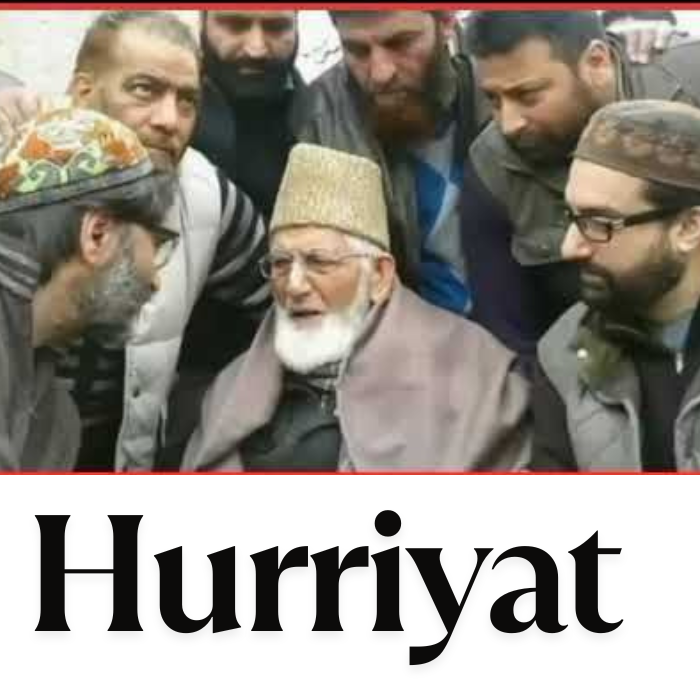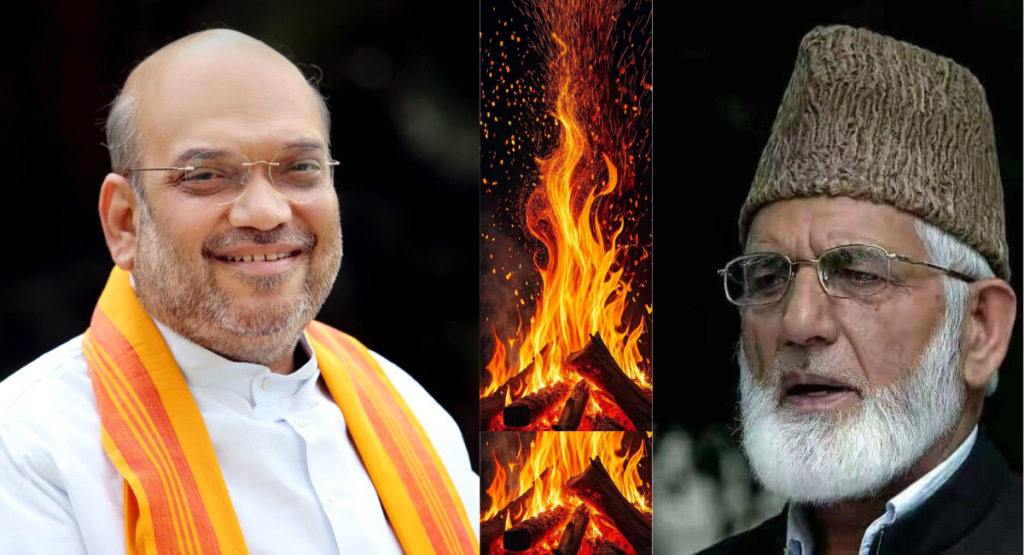Introduction: A New Chapter for Jammu and Kashmir?
For the last more than seventy years, Jammu and Kashmir (J&K) has been a live crucible of conflict, associated variously with separatism, militancy, and political turmoil.
The demands for either independence or for merger with Pakistan, headed by groups like the Hurriyat Conference and influenced by our neighbors, have given a history of the backdrop of this region.
But an all-new controversy has sparked off with Home Minister Amit Shah’s recent pronouncement: is this very old, overdrawn matter not getting drier now?
According to Amit Shah, separatism in Jammu and Kashmir has declined: as two of the Hurriyat-affiliated groups have severed links with one another, this denotes the success of the Modi government in this regard.
This assertion during a public address in recent times has instilled hopes in policymakers but left critics gasping and observers curious. If true, it will mark the beginning of a new chapter in a region where peace had often felt like a distant dream and would completely reshape the political and social fabric of the region.
This blog entry delves into the ardent assertion of Shah while tracing the premise, ramifications, and accompanying context of the J&K contest with separatism. We shall undertake a study of the historical background, scrutinize the role of government, weigh dissenting voices, and speculate on the meanings regarding the future.
Is it really possible for J&K to rise above its past separatist noises, or is the optimism misplaced at best? Let us unravel this multi-layered complex narrative.
Background Context: The Roots of Separatism in J&K
The roots of separatism in Jammu and Kashmir go back to 1947, the year when the subcontinent was partitioned between India and Pakistan, leaving the princely state as a prize fought over by both.
While the state had a Muslim-majority population, the fact that it annexed itself to India by a Hindu ruler planted seeds of discontent, which grew with demands for self-determination from this region in the near future. By the 1990s, the Hurriyat Conference emerged as one of the major voices for self-determination or an agreement with Pakistan, using protests, strikes, and tacit support for militancy.
The Indian government’s response varied over the years between force and negotiations. The early measures included launching military operations to curb insurgency and political agreements such as the 1975 Indira-Sheikh Accord, which sought to integrate J&K as an integral part of India.

But discontent kept surfacing, culminating in the Modi government’s revocation of Article 370 in 2019, stripping J&K of its special status, converting it into a Union Territory, and allegedly dismantling the structural bases of separatism towards direct governance and development.
Thus, since 2019, the policies, across the board, have focused on the tightening of security, isolation of separatist leaders, and building the foundation for future investment in infrastructure-roads, schools, and employment development-that will win the hearts and minds of the population.
Shah’s assertion of declining separatism, therefore, builds on the proposition that the conditions being created will increasingly erode these ideological and logistical bases for organizations like the Hurriyat. History of the region, however, warns against optimism: past victories
The essence: Amit Shah on the Decline of Separatism
Amit Shah’s declaration of early 2025 in a public meeting has created shockwaves in India’s political arena. The separatism in J&K is receding, according to Shah, who cited the severing of ties with the separatist coalition by two factions linked to the Hurriyat as one of the main indicators.
“Under the Modi government, the backbone of separatism has been broken,” Shah is reported to have said while asserting that this is a success of national unity against the divisive ideologies that had plagued the region for decades.
The incident may have a number of reasons behind it, signifying the multiple-layered nature of the government’s approach. Intensification of security operations targeting separatists, with arrests, asset seizures, and bans under laws such as the Unlawful Activities (Prevention) Act (UAPA), would disrupt the activities of kidnapping and extortion. Secondly, economic initiatives-to lure back public opinion by tangible benefits given rather than ideological promises-that may include Rs 5,000 crore worth of investments in infrastructure and youth employment programs. Shah’s comment suggests that these counterinsurgent efforts are delivering dividends with fissures appearing in what were once united separatist groups such as Hurriyat.
But what does that really mean? If there is a genuine fading of separatism, it would mean greater political stability where the elected governments in J&K could focus on governance rather than perpetual crisis management.
The claim is also a matter for scrutiny: Are these defections real ideological retreat, or rather are they tactical maneuverings by organizations adapting to new pressures? Shah’s positive outlook presents a much more assuring picture; however, the reality of that picture and how far it may go has yet to be determined in the transitional moment for the area.
Counter Arguments: Is the Decline True or False?
While Amit Shah believed that the story was of a positive beginning, others are not so sure that separatism in J&K is truly being stamped out. Critics argue that the ideology might instead be transforming, going underground, or taking other forms, so as to conceal its presence rather than eliminate it altogether.
For even though the protests may be sporadic or smaller-scale, such protests, coupled with occasional militant attacks, suggest that discontent is still lurking somewhere, possibly stoked by grievance over policies perceived to be heavy-handed or dismissive of local aspirations.
The local perspective complicates matters further. According to PDP and NC leaders, although they admit that the Hurriyat has diminished in influence,
They present a case involving the youth, restrictions on free expression, and lack of talks, all factors that, if not dealt with consequently, may become catalysts for a resurgence of separatism. To them, real healing lies not only in the dismantling of separatist networks, but constructing credibility through inclusive governance, a task the Modi government has so far failed to pick up.
Since the authoring of the report, the situation in J&K remains tangled in a web of history, identity politics, and geopolitical tensions, making Amit Shah’s claim at best a partial truth. While the fracturing of Hurriyat factions may signal a tactical retreat, the more profound roots of separatism—sense of marginalization, distrust of Delhi, and the unresolved Kashmir dispute—are seemingly very much alive. This duality demands a cautious posture: to celebrate what little gains there are while being ever aware of these undercurrents that could once again shift the tide against us.
A Tumultuous Change or an Irresponsible Flicker of Hope?
For Amit Shah to say that separatism in Jammu and Kashmir is on a decline conveys a small ray of hope in an otherwise troubled scenario. Should this feeling of alacrity pervade, then perhaps an enterprising move by the Modi regime to promote development along with security crackdowns will be bolstered by the fracturing of two factions of Hurriyat-related groups.
Or, it is suggestive of another future when J&K will witness development instead of protests and integration instead of isolation—the kind of future that has been yearned for yet never dares predicted by many.
But history shows there is a need for caution: J&K’s challenges are deeply rooted, yet interventions that target short-lived symptoms merely serve to camouflage further unease. Being able to propel this momentum will entail much more than the numbers that declare victory—there will have to be concrete efforts to resolve issues causing deep-rooted alienation through meaningful dialogue, empowerment, and political inclusivity.
Should the diminishing ever-more signs of separatism pave way for the aforementioned activities, this could add to a monumental leap; should this not happen? It could be yet another newsworthy blip in an enduring story of agonized silence.
What do you think? Should Jammu and Kashmir finally be able to exorcise the specter of separatism, or is this hope too fragile to nurture? Leave your comments below and come back for updates on this unfolding story.
Setting up the road to peace will not be easy; however, every step, no matter how slight, is an opportunity to recreate the region-an opportunity where unity will finally triumph over division.

